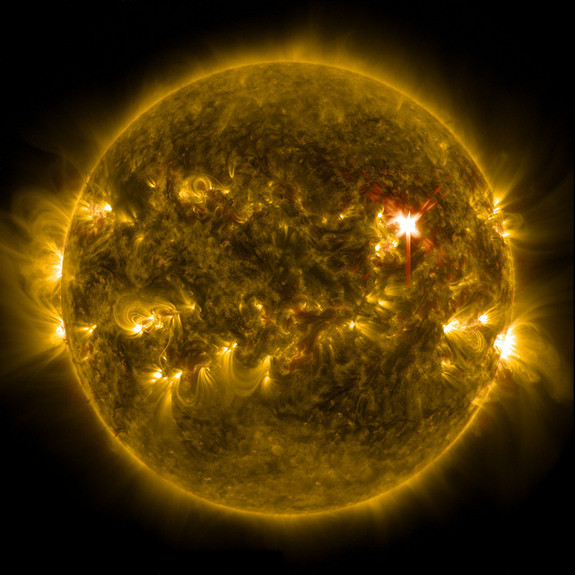Huge X1-Class Solar Flare Threatens Geomagnetic Storm With Potential to Wipe Out GPS
The sun unleashed a major solar flare at the weekend, which could cause a geomagnetic storm on 2nd April.
The flare erupted on Saturday from the decaying sunspot AR2017 at 17.48 GMT, according to a later report from the NOAA-led Space Weather Prediction Center. Nasa's Solar Dynamics Observatory caught the celestial event on video.
Tony Phillips, a Nasa astronomer, told Spaceweather.com that the solar flare and several recent eruptions of super-hot solar plasma (called a coronal mass ejection) could trigger a minor geomagnetic storm. The effects of a CME are usually only felt a few days after the flare, when the plasma has time to reach Earth and disrupt its magnetic field.
However, the blast also produced what Phillips called a "magnetic crochet" - a rippling in the Earth's magnetic field that occurs during the flare of which the effects are felt immediately.

The NOAA-led (National Oceanic and Atmospheric Administration) Space Weather Prediction Center reported that the blast caused a brief radio blackout for several minutes on Earth, while posing a disturbance threat to satellites and GPS.
According to Phillips, the flare may also amplify the Earth's northern lights displays, which are created when charged particles from the sun come into contact with particles in the Earth's atmosphere.
The particles are then drawn to the Earth's poles by the planet's magnetic field, creating the illuminations.
He added that the flare also produced radio signals, while momentarily blacking out terrestrial radio signals: "The explosion above sunspot AR2017 sent shockwaves racing through the sun's atmosphere at speeds as high as 11 million mph. Radio emissions stimulated by those shocks crossed the 93 million mile divide to Earth, causing shortwave radio receivers to roar with static."
According to Space.com, more solar flares may erupt from AR2017, although it is dissipating.
Karen Fox, of Nasa's Goddard Space Flight Center said in a statement: "Solar flares are powerful bursts of radiation. Harmful radiation from a flare cannot pass through Earth's atmosphere to physically affect humans on the ground, however - when intense enough - they can disturb the atmosphere in the layer where GPS and communications signals travel."
They added that electrical power lines could also be affected by the flare and high frequency communications may be blocked when the extra radiation hits Earth.
The sun is in an active phase of its 11-year solar cycle. Last month, a catastrophic "solar superstorm" that would have seen satellites disabled and electronic devices disrupted narrowly missed our planet.
© Copyright IBTimes 2025. All rights reserved.






















